Calorie Calculations 101
 Do you fear that your recommended calorie range is too high? Are you consistently eating fewer calories than your SparkPeople plan advises? Have you found yourself wondering how we determined the exact number of calories that is right for you?
Do you fear that your recommended calorie range is too high? Are you consistently eating fewer calories than your SparkPeople plan advises? Have you found yourself wondering how we determined the exact number of calories that is right for you?While determining how many calories each individual should eat for successful and healthy weight loss isn't exactly rocket science, it can be confusing. So for those who want a deeper understanding, this article explains the formulas, mathematics, and general nuts and bolts, in nine easy steps.
SparkPeople offers two different options to determine your calorie range. This article assumes that communication between your Fitness Tracker and Nutrition Tracker is turned ON. With this option selected, all of the calories burned that you track via the Fitness Tracker (or using an activity tracker synced with your SparkPeople account) will get added into your daily calorie range. The amount of calories you can eat each day will increase when you track your fitness. Note: This is the default option for all members who joined the site after 7/10/13. If you are not sure which method you are using, click here. If you know you are using the other option (where communication between your trackers is turned OFF) the article below will not apply to you. Click here instead.
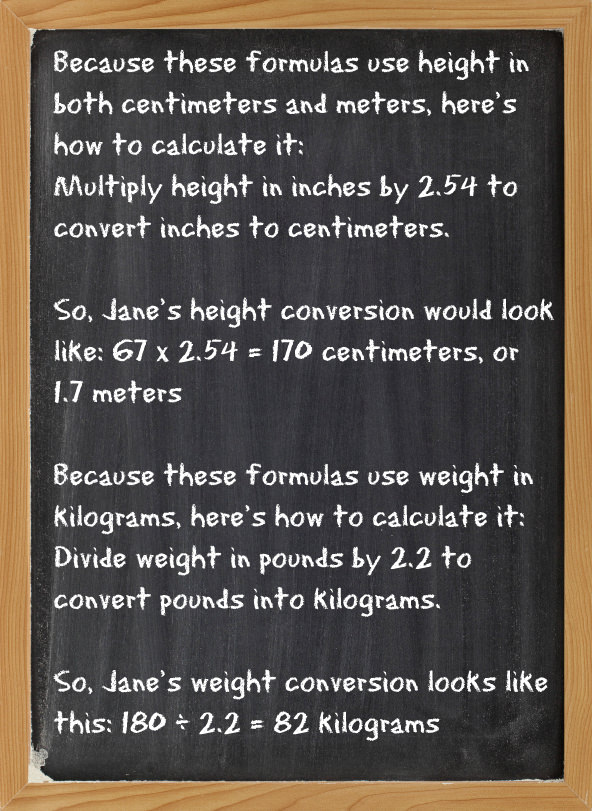 Case Study
Case Study To show how these calculations work, we will use Jane as an example. Here are Jane's important stats that will affect her weight loss and calorie needs:
- Age: 35
- Gender: Female
- Height: 5 feet, 7 inches (67 inches)
- Current weight: 180 pounds
- Goal weight: 160 pounds
- Fitness plan: Three 30-minute cardio sessions per week
- Activity level: Sedentary (has a desk job)
Step #1: Determine Your Body Mass Index
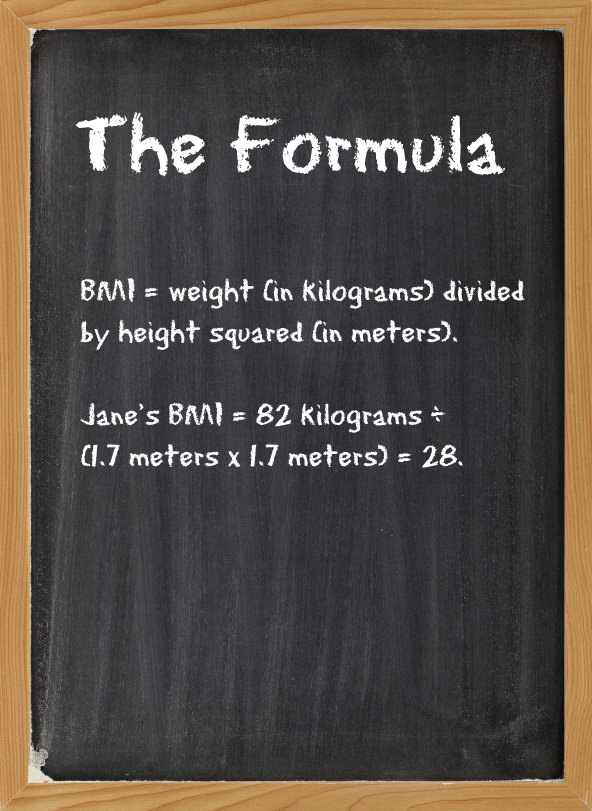 Body Mass Index (BMI) is a quick and easy formula for determining if your weight is appropriate for your height. It has recently been used to quantify an individual's obesity level. You can use this tool to determine if you need to lose weight in the first place. To the right is the general formula, using Jane as an example.
Body Mass Index (BMI) is a quick and easy formula for determining if your weight is appropriate for your height. It has recently been used to quantify an individual's obesity level. You can use this tool to determine if you need to lose weight in the first place. To the right is the general formula, using Jane as an example.According to the USDA guidelines, a BMI less than 25 is healthy, from 25 to 29.9 is classified as overweight and anything higher than 30 is considered obese.
Keep in mind that BMI is just one part of your health profile. It measures a general relationship between weight and height but does not distinguish between fat (which doesn't weigh much) and muscle (which weighs a lot). A thin but sedentary person could have a healthy BMI but be flabby and out of shape, for example. Finally, BMI is not considered reliable for everyone, including children, pregnant women, body builders, and the frail elderly. Read SparkPeople's Fitness Reference Guide: Body Composition for more information about BMI.
Step #2: Set Your Weight-Loss Goal
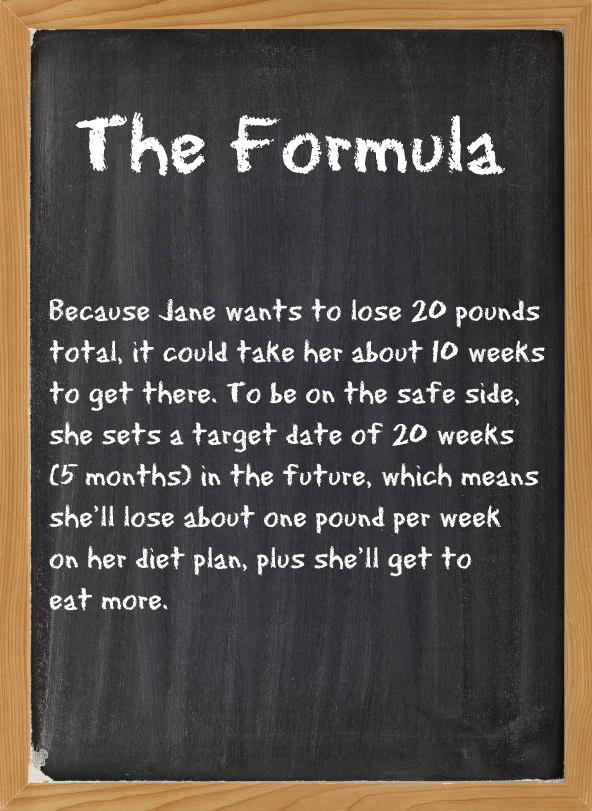 Research shows that slow, gradual weight loss is not only healthier, but longer-lasting. Many fad diets promise excessive amounts of weight loss in a short amount of time, which can be dangerous and impermanent. Therefore, SparkPeople will NOT let people set a weight-loss goal that is too aggressive. While the weight might come off slowly using our plan, you will have a better chance of maintaining your weight loss over time.
Research shows that slow, gradual weight loss is not only healthier, but longer-lasting. Many fad diets promise excessive amounts of weight loss in a short amount of time, which can be dangerous and impermanent. Therefore, SparkPeople will NOT let people set a weight-loss goal that is too aggressive. While the weight might come off slowly using our plan, you will have a better chance of maintaining your weight loss over time.If you set an aggressive weight-loss goal (2 pounds per week or more), your calorie range will be lower. If you set a gradual weight-loss goal (1 pound per week or less), your calorie range will be higher.
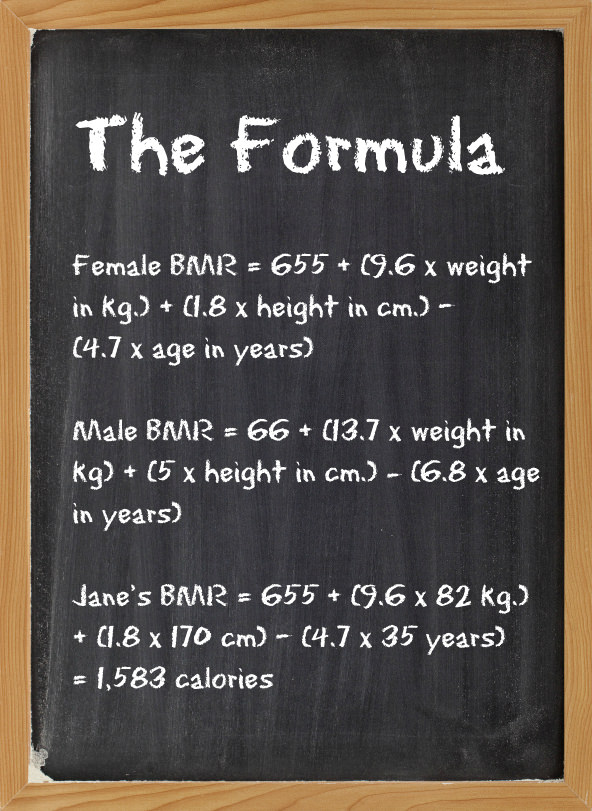
Step #3: Meeting Your Basal Metabolic Needs
Your Basal Metabolic Rate (BMR) is the number of calories your body needs to perform basic, everyday functions like circulating blood, digesting food, and breathing. SparkPeople uses the Harris Benedict Formula to calculate your BMR, which differs between men and women.
This number reflects how much Jane would need to consume just to live—even if she did nothing but lie in bed all day. It will come into play in the next equation.
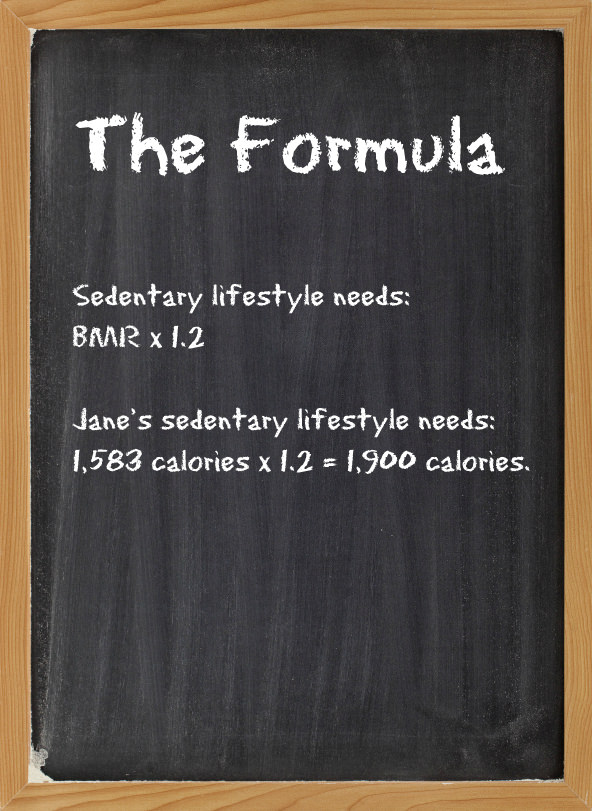 Step #4: Activity Level Assumptions
Step #4: Activity Level AssumptionsYou will be asked how active you are throughout the day: sedentary (sitting most of the day), lightly active (standing a lot of the day), or active (moving around all day). Based on that information, your BMR (calculated in the step above) will be multiplied by 1.2, 1.375 or 1.55 to account for those extra calories you're burning.
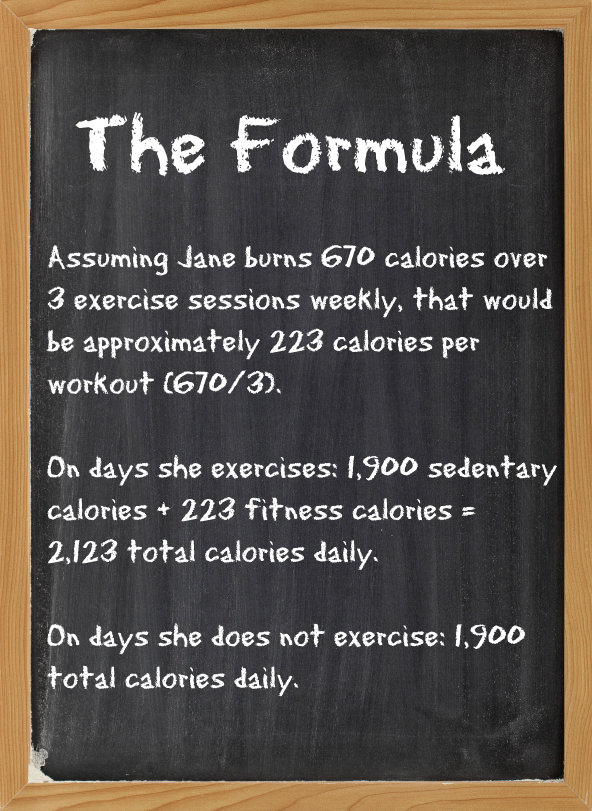 Step #5: Total Your Daily Calorie Needs
Step #5: Total Your Daily Calorie NeedsThe calories burned you track via the Fitness Tracker will be added to your daily calorie range. This means that your recommended calorie range will change after you track your fitness activities for the day.
She can eat this much daily and maintain her weight, but in order to lose weight, she needs to eat less than this. That’s where Step #6 comes in.
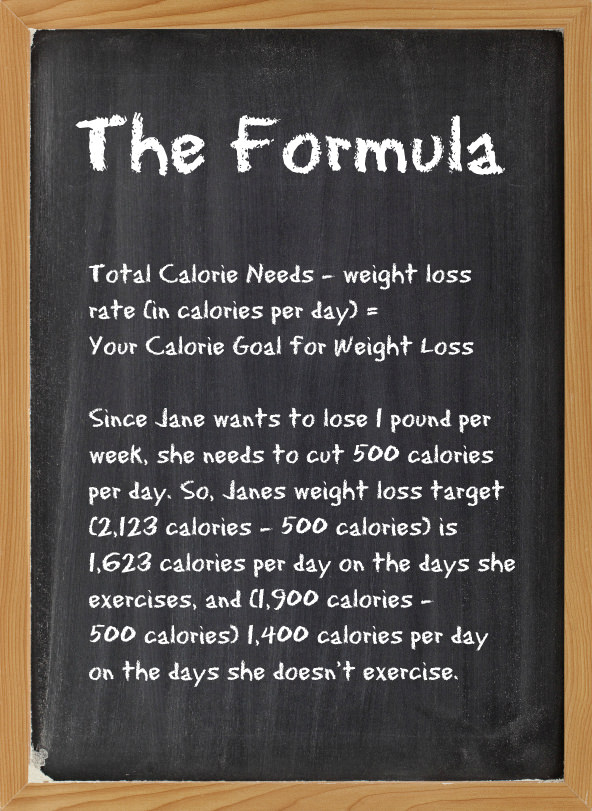 Step #6: Account for Rate of Weight Loss
Step #6: Account for Rate of Weight LossOne pound of body fat equals 3,500 calories. Therefore, to drop 1 pound per week, you must create a deficit of 3,500 calories over the course of seven days, which equals 500 calories per day. To lose 2 pounds per week (3,500 calories x 2 pounds = 7,000 calories), you must cut 1,000 calories daily.
So by subtracting your weight-loss rate (for example, 1 pound or 2 pounds weekly) from your Total Daily Calories (Step #6), you will create an appropriate caloric deficit in your body, and achieving your desired weight loss. There is no reason to cut additional calories, since this has already been included in the formula.
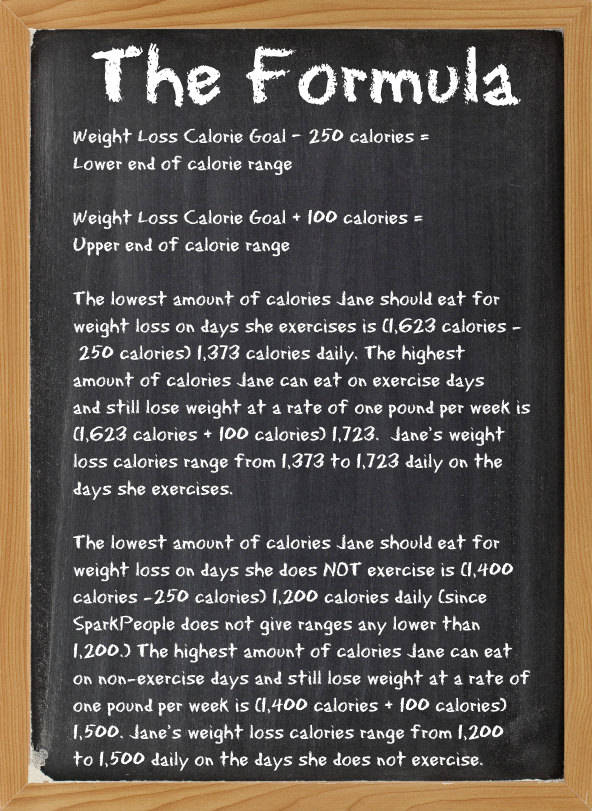 Step #7: The SparkPeople Calorie Range
Step #7: The SparkPeople Calorie RangeSparkPeople comes up with your individual calorie range by subtracting 250 calories from your base calorie goal, calculated in Step #5 (BMR plus activity level calories) and adding an additional 100 calories to this goal for the upper end of the range. This range will change depending on the amount of calories burned you track. For example, if you tracked a workout that burned 223 calories, this number would be added to the low and high end of your range for the day.
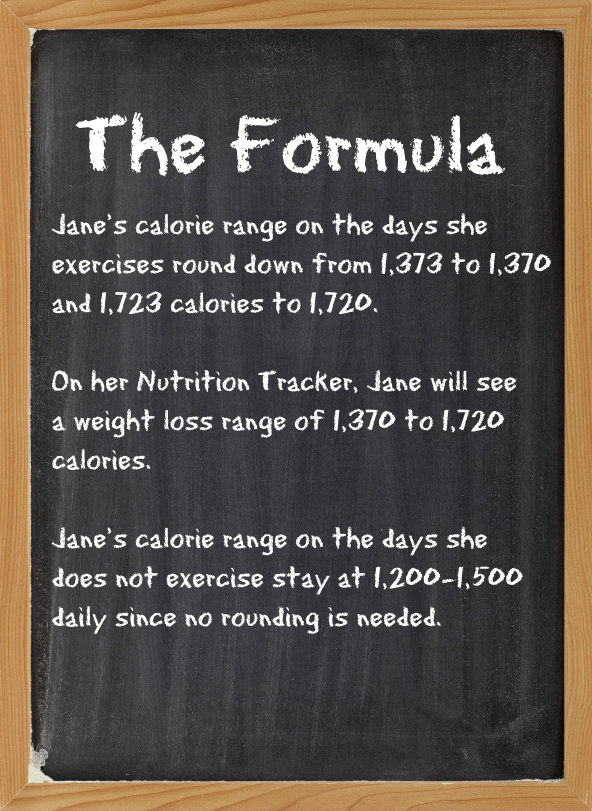 Step #8: Rounding the Numbers
Step #8: Rounding the NumbersTo make life easier, SparkPeople then rounds these numbers up or down to the nearest 10.
Step #9: For Your Health and Safety
The SparkPeople program will NOT allow any female to eat fewer than 1,200 calories daily or any male to eat fewer than 1,500 calories daily.
When calories drop too low (usually below 1,200 calories for women and 1,500 calories for men), your body's protection mechanism switches on. In order to conserve energy, the body lowers your metabolism and you will not burn calories as quickly. This results in a slower weight loss rate, or sometimes prohibits any weight loss from occurring.
When your caloric intake falls below these levels, it is also extremely difficult to obtain all the nutrients that your body needs for health and survival. These very low calorie intakes can also lead to other health problems such as eating disorders, gout, gallstones, and heart complications.
Related Articles
-
Can You Achieve Weight Loss Through Hypnosis?
The weight loss industry is big business
-
Fenphedra Xtreme Weight Loss And You
Taking supplements to help you lose weig
-
What Is Dieting? How Should Your Diet Plan Compliment Your Weight Loss Plan?
Dieting means following a pre-designed pattern of food intake in o
-
6 Factors That Can Hinder Your Weight Loss Success
There is a lot of bad information in the weight loss industry. New die
-
Begin Healthy Weight Loss Diet with Healthy Food
A Healthy Weight Loss Diet is a quest th
-
Do this one thing for stronger bones
Osteoporosis is the loss of bone density. It is more prevalent
- DON'T MISS
- Secrets To Get A Flat Tummy Fast
- Weight Loss Through Walking
- Fat Loss Tips - Fat Loss Diet Plan and System
- How to Overcome a Diet Plateau
- 5 Key Strategies for Successful Weight Loss and Beyond
- Fast Weight Loss Diets
- What Are The Benefits Of The Lowcarb Diet
- Direct Correlations Between Eating Healthy And Weight Loss
- Find Success In Your Weight Loss Efforts
- Tips To Lose Weight Fast 2011




